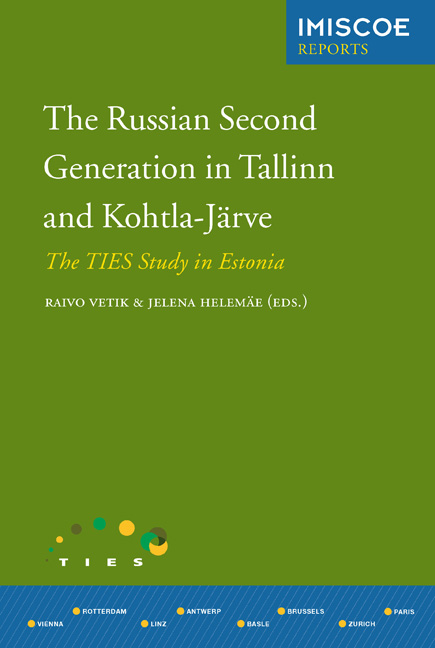Book contents
- Fronmatter
- Contents
- Preface
- List of Tables, Figures and Chapter Appendices
- 1 Introduction
- 2 Migration Patterns
- 3 Integration Policies
- 4 Ethnic Inequalities in Education
- 5 Explaining Different Returns from Human Capital in the labour Market
- 6 Income Inequality
- 7 Housing Conditions Andneighbourhood Satisfaction
- 8 Contact and Crisis in Interethnic Relations
- 9 Gender role Attitudes
- 10 Sense of Belonging to Estonia
- 11 Conclusions
- Appendix
- List of Contributors
- Other IMISCOE Titles
1 - Introduction
Published online by Cambridge University Press: 20 January 2021
- Fronmatter
- Contents
- Preface
- List of Tables, Figures and Chapter Appendices
- 1 Introduction
- 2 Migration Patterns
- 3 Integration Policies
- 4 Ethnic Inequalities in Education
- 5 Explaining Different Returns from Human Capital in the labour Market
- 6 Income Inequality
- 7 Housing Conditions Andneighbourhood Satisfaction
- 8 Contact and Crisis in Interethnic Relations
- 9 Gender role Attitudes
- 10 Sense of Belonging to Estonia
- 11 Conclusions
- Appendix
- List of Contributors
- Other IMISCOE Titles
Summary
The integration issue in Estonia
Interethnic relations in Estonia present a puzzle for studies of immigrant integration. One trend in the literature argues that the historical need to define the position of the Estonian nation vis-à-vis the position of the new Russian minority in the country has accelerated the transformation of Estonia from an ethnic nation to a modern civic nation (Lauristin & Heidmets 2002). The other much more critical trend in the literature maintains that the influence of the legal-restorationist concept, adopted by ethnic Estonian elites at the beginning of the 1990s, continuously reinforces interethnic alienation in Estonia (Brosig 2008). This trend is bolstered by regular integration monitoring carried out in Estonia since the year 2000, as well as a number of political events in the last few years. Of particular note is the Bronze Soldier crisis in April 2007, which led to the arrest of more than a thousand young Russians who protested against the removal of the Soviet era war memorial from downtown Tallinn (Ehala 2009).
The recent increase in tensions related to second-generation immigrants is not a unique phenomenon in a broader European context. However, the reasons behind this development are very specific in Estonia. These tensions have been shaped by social and political processes from both the Soviet period (since 1945) and the post-independence period (since 1991). The first major peculiarity of the Estonian integration issue, as compared to most other European countries facing the challenge of integrating the second generation, is that as many as one third of the current Estonian population is of immigrant origin. Ethnic Russians form the biggest minority group, comprising about 26 per cent of the total population, and altogether there are representatives of more than a hundred different ethnic groups. According to the census of 1934, before the Soviet occupation of 1940 Estonians comprised 88 per cent, Russians 8 per cent and other nationalities 4 per cent of the population of Estonia. Russians in Estonia lived mainly in the border regions of Narva, Peipsi and Petseri. In 1945, the Soviet authorities redrew the border between Estonia and the Russian Federation and, as a result, Estonia lost the border regions inhabited by native Russians.
- Type
- Chapter
- Information
- The Russian Second Generation in Tallinn and Kohtla-JärveThe TIES Study in Estonia, pp. 13 - 26Publisher: Amsterdam University PressPrint publication year: 2012

